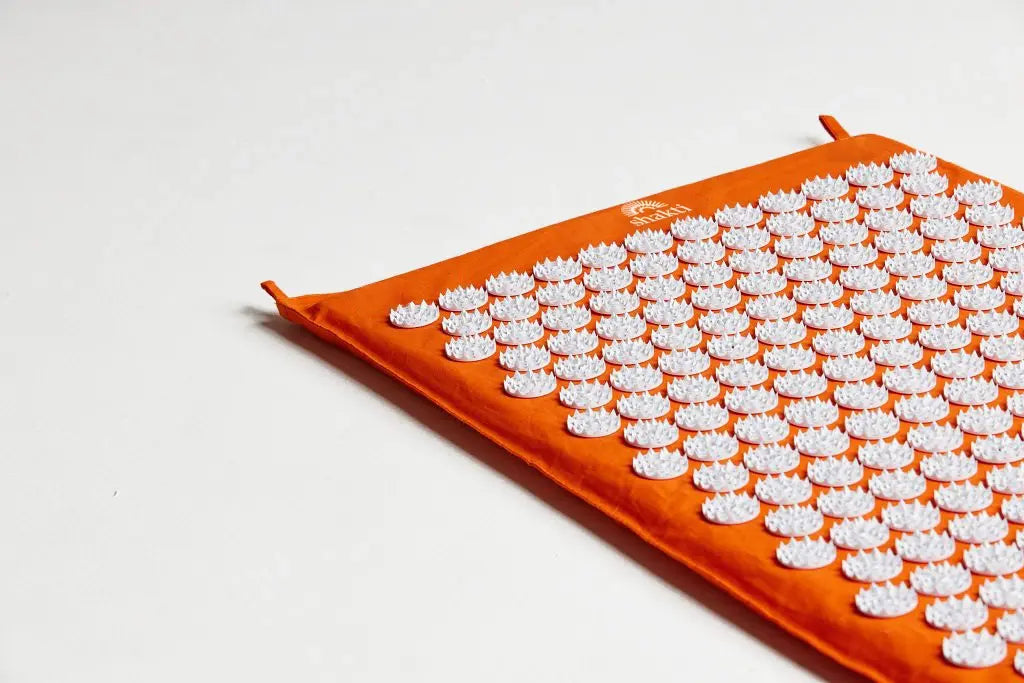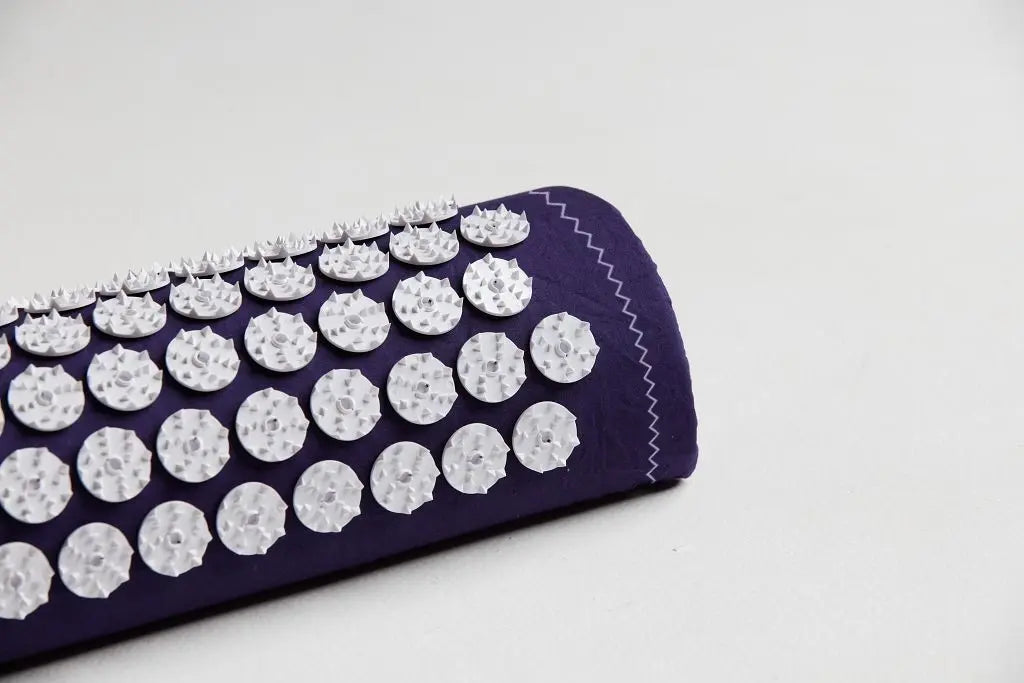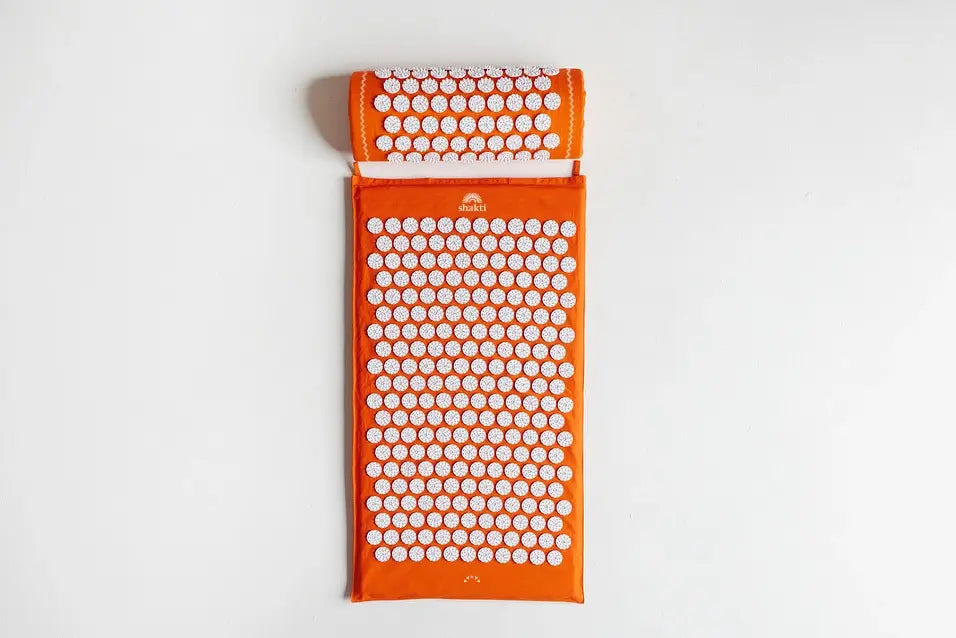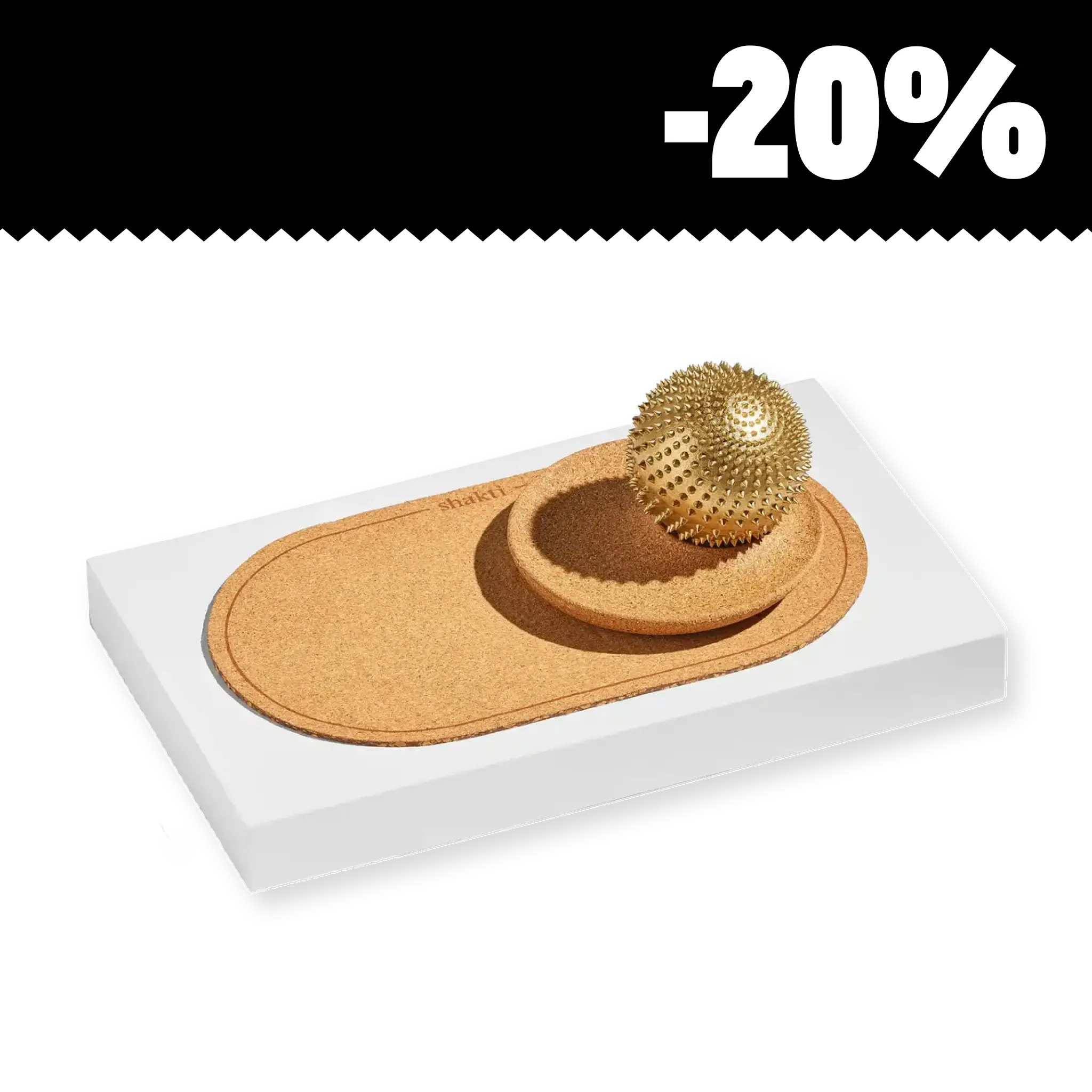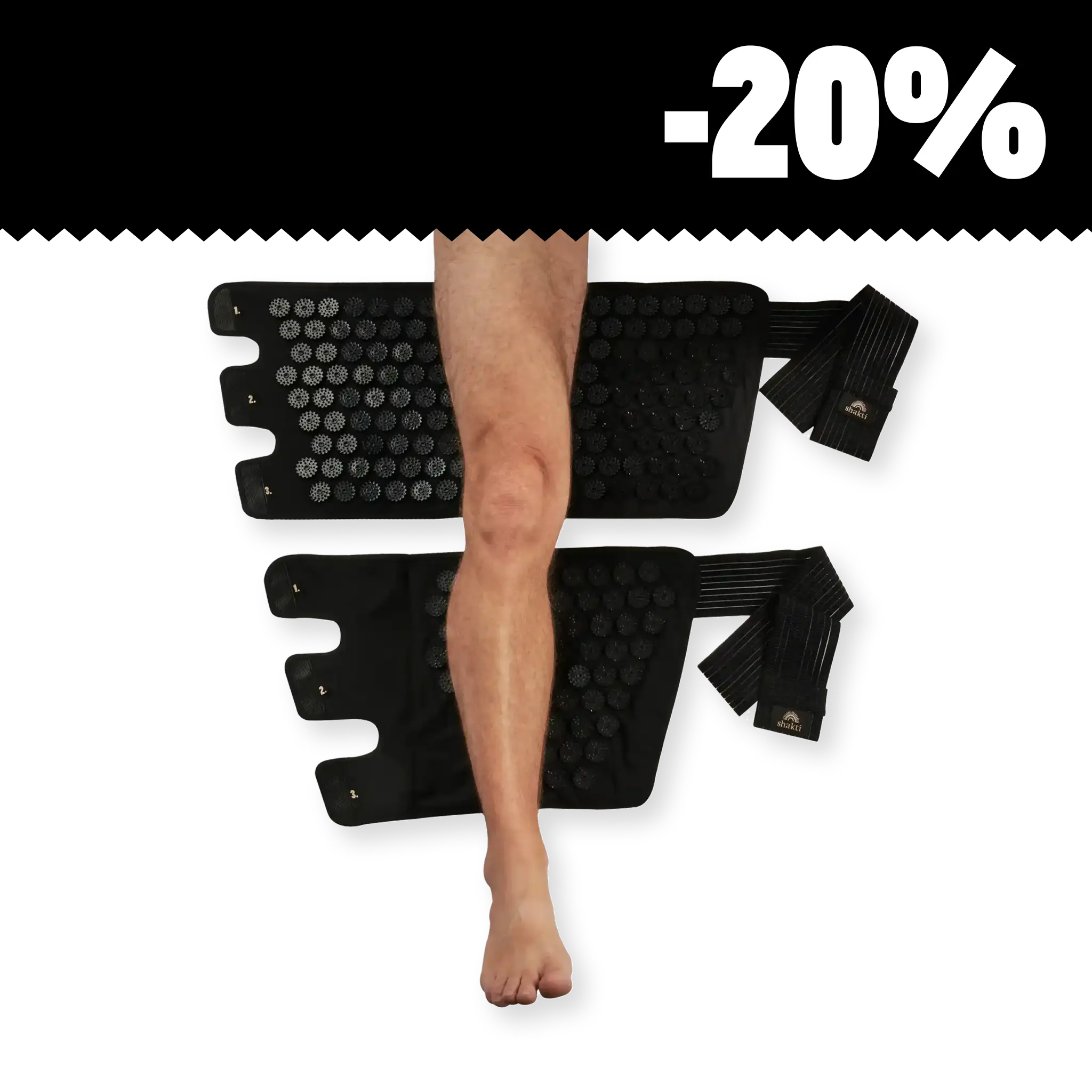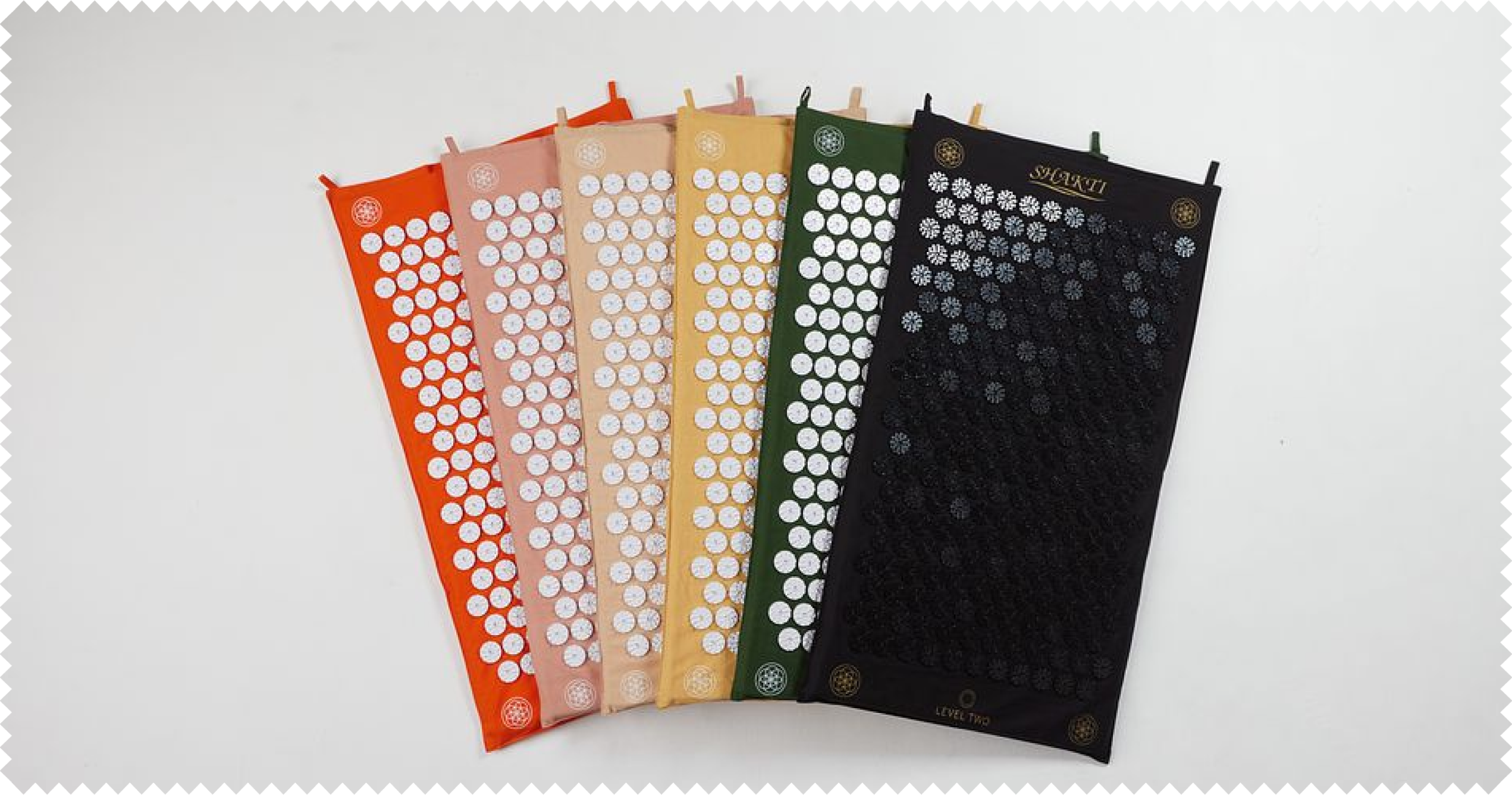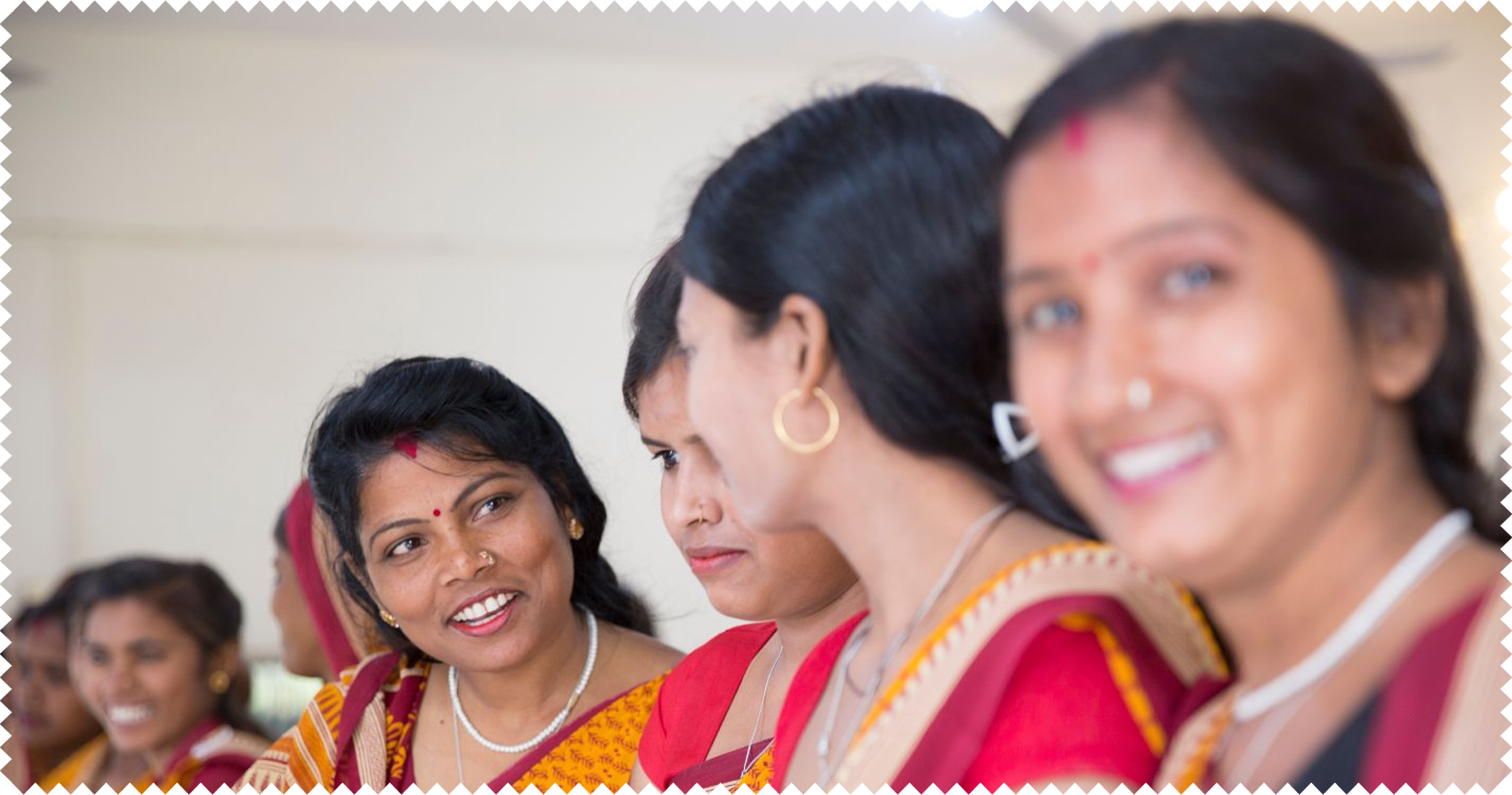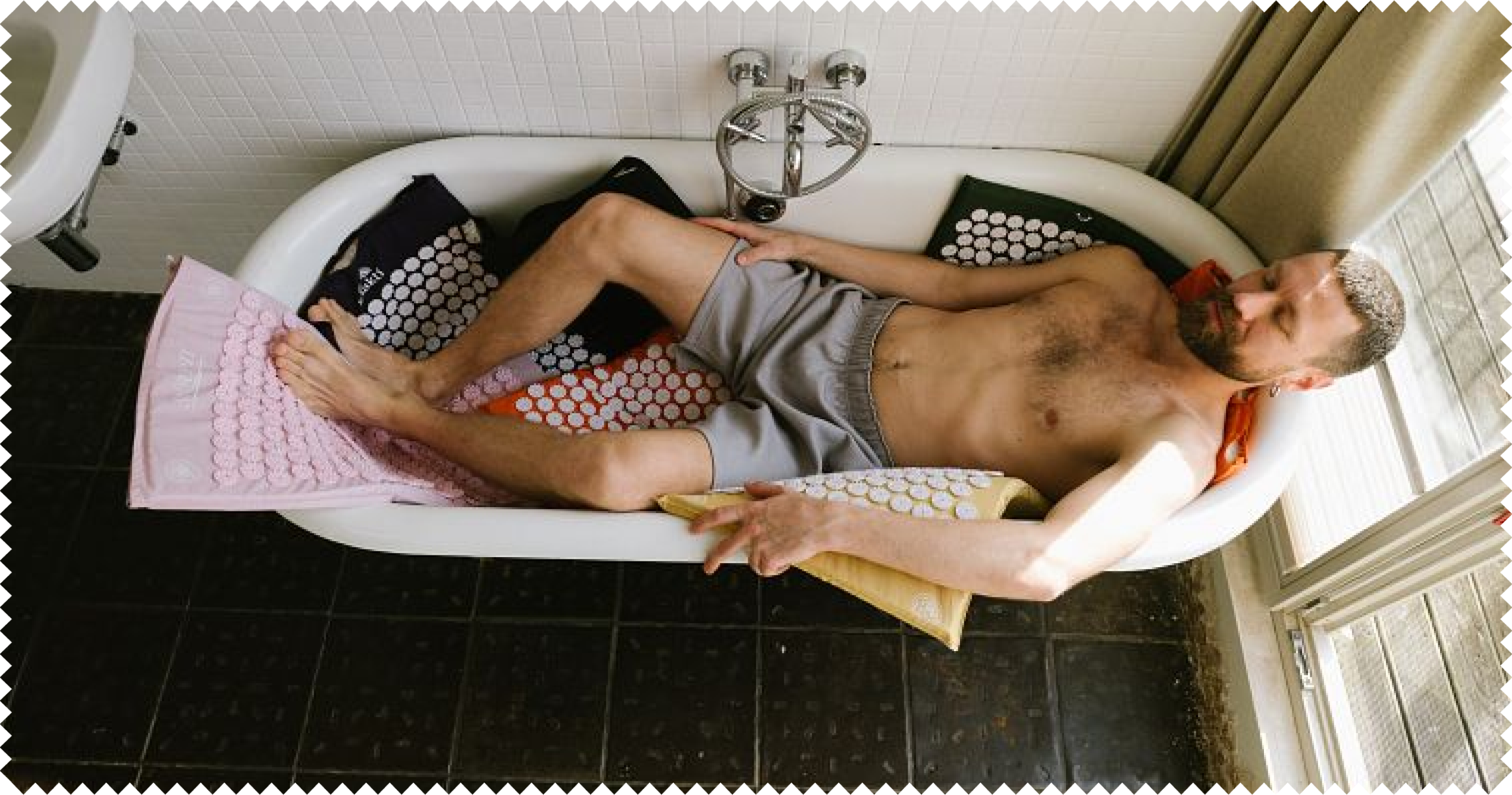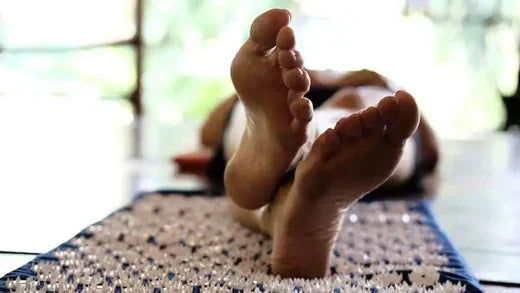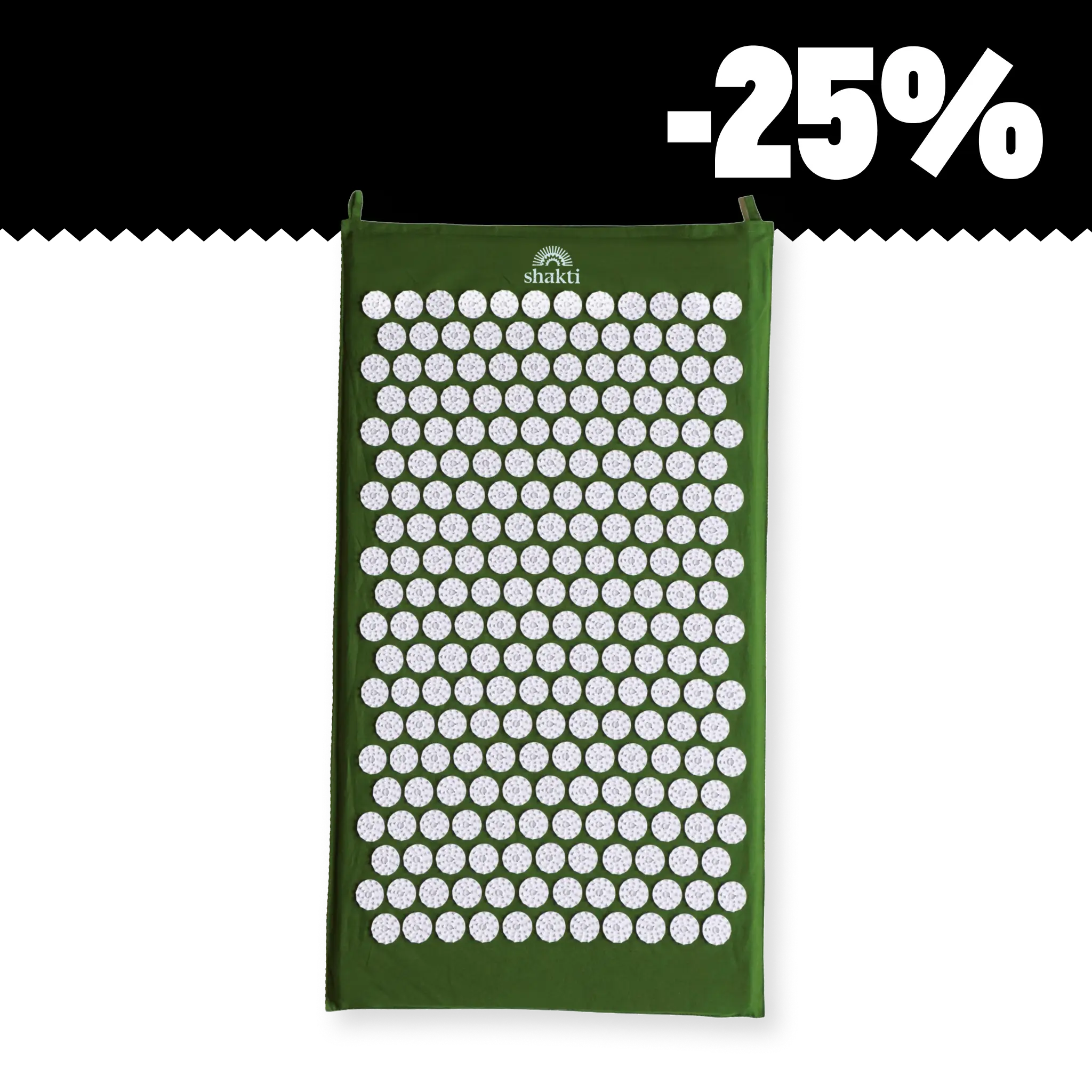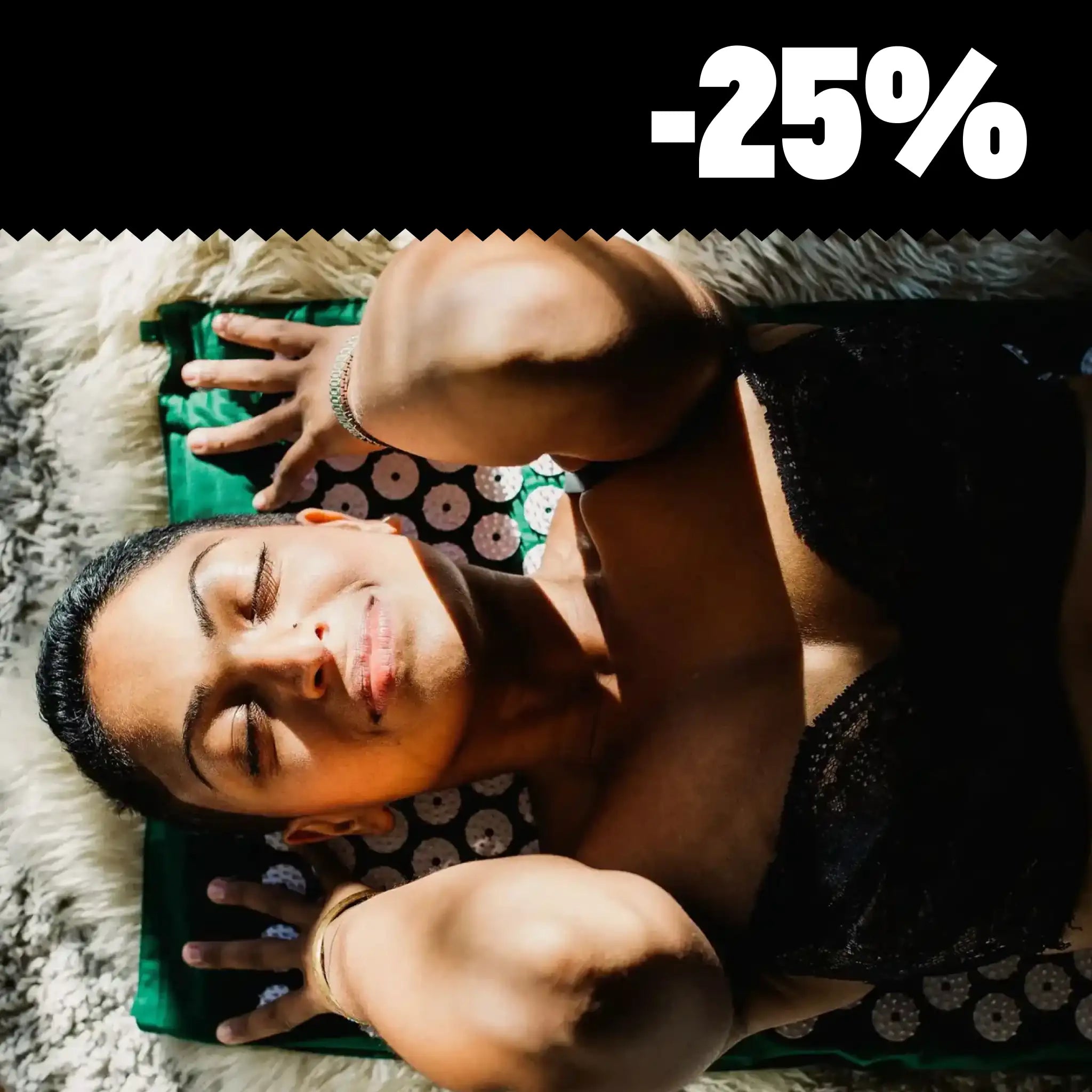Knee pain can manifest itself in very different ways in different people. Perhaps you always feel it after exertion or during particular movements? Sometimes knee pain occurs on the side or you feel it directly inside the kneecap area or in the joint. To find out the causes of knee pain, you should observe exactly in which situations your knee hurts, how the pain feels, where it occurs and how long it lasts. This will also provide clear clues as to what is causing the knee pain. In this article, you will find a compact overview of the topic of knee pain, possible causes and, above all, an answer to the question: What helps with knee pain?
Content
1. the knee as the largest joint in the human body
2. causes of knee pain: When it hurts and why
3. knee pain after movement: This is what it can indicate
4. localize knee pain: Where exactly does the pain occur?
5 When should I see a doctor if I have knee pain?
7. acupressure for knee pain: this is how effective pain treatment can be
8. prevention: How can I prevent knee pain?
9. conclusion: relying on home remedies for knee pain can be worthwhile
The knee as the largest joint in the human body
Before we take a look at knee pain and complaints, it is worth taking a closer look at the structure and function of the knee. The knee joint has the important task of connecting the thigh to the lower leg and thus enabling various types of locomotion - from running and cycling to swimming. At the same time, the knee is the largest joint in the human body and therefore also quite complex in structure.
The knee joint consists of three parts:
- Joint between the upper and lower leg bones (inside of the knee)
- Joint between the upper and lower leg bones (outside of the knee)
- Joint between patella and guide groove on femur
These three joints enable you not only to extend and bend your knee, but also to rotate it, for example. Each joint surface is covered with articular cartilage, which enables the bones to glide. The knee joint is held securely in place by two lateral and two cruciate ligaments.
Knee pain causes: When it hurts and why
There are many possible causes of knee pain. After knee injuries that occur during sport, the pain can occur acutely and last for a long time. Overloading the knee, on the other hand, can lead to chronic knee pain. In addition, diseases such as osteoarthritis or rheumatism can also be possible causes of knee problems. To find out the causes, it is important to observe exactly when the knee pain occurs.
A distinction is made between acute and chronic knee pain. Acute pain lasts only a few hours to a few days and then subsides completely. They usually occur due to a wrong movement or an injury. Chronic knee pain starts more or less acutely or also insidiously. Knee pain is said to be chronic if it lasts for more than six weeks. Knee pain is also chronic if it initially subsides after treatment or therapy and then recurs again and again.
Knee pain in osteoarthritis is particularly common
Osteoarthritis is one of the most common causes of knee complaints. In many cases, osteoarthritis of the knee occurs between the ages of 40 and 50. It is usually caused by overloading due to too much sport or incorrect movements at work. Being overweight or misalignments of the knee can also promote knee osteoarthritis. You can feel osteoarthritis in the knee joint by the fact that your knee feels stiff and hurts when you move. The cartilage in the joint becomes thinner and is no longer as well protected.
Depending on which area of the knee is affected, the knee pain may occur on the outside (lateral). Knee pain on the inside of the knee (medial) can also indicate the onset of osteoarthritis. If the area under the kneecap is affected, then the pain in the knee occurs mainly when standing up (patellofemoral). In a severe course, the knee joint may eventually be so damaged that it must be replaced. Other forms are milder and the symptoms even subside after some time.
Rheumatism knee pain
Does your knee feel stiff and painful, especially in the morning or after a long period of rest? Then this may indicate a rheumatic disease. Rheumatic disease usually affects not only the knee joints, but also all other joints. Rheumatism is a persistent inflammation of the joints that occurs more frequently in women than in men. The exact cause of this disease is not yet fully understood, although a hereditary predisposition probably plays a major role. The inflammation changes the mucous membrane of the body and therefore also the bursa of the knee. As a result, the healthy cartilage is also destroyed.
If left untreated, the inflammation affects not only the joints, but also the tendon sheaths and the bones. Rheumatism usually progresses in phases, so that you don't always feel severe knee pain, but also have phases in which you are pain-free. The pain is often described by sufferers as pulling or tearing.
Knee pain after exercise: This is what they can indicate
Knee pain is often caused by pain during movement. This means that the knee pain occurs during or after a certain movement. When exactly the pain is felt and after which type of movement it occurs allows conclusions to be drawn about the cause.
Knee pain after getting up in the morning
Knee pain often occurs after the body has been resting, when the knee joint is suddenly put under strain again. These start-up pains can have very different causes and range from knee arthrosis to age-related wear and tear. Older and not completely healed sports injuries can also promote pain in the knee after standing up.
Squats pain and why they occur
Knee pain when bending or squatting indicates problems with the kneecap or the joint between the thigh and the kneecap. When you squat, there is a lot of pressure on the kneecap. If knee pain occurs when you bend your knee, then it may also be due to problems with sliding tissues of the patella (the disc-shaped bone in front of the knee joint), which in turn can lead to the development of bursitis.
Knee pain when climbing stairs
If the pain occurs when walking down a flight of stairs, this indicates damage to the cartilage. As a result, the thigh bone can no longer slide easily over the kneecap, and friction and wear occur. Bursitis can also be responsible for causing pain when climbing stairs.
Knee pain after jogging & running training
When knee pain occurs after running and the morning jog, it tends to be harmless and not generally due to a specific condition. However, they should subside overnight and should not last longer. If the pain is very severe, you should take a break from sports and have the cause of the pain clarified by a doctor.
Jogging puts less stress on the knee itself than on the tendons, cartilage and muscles. Knee pain occurs mainly in beginners who start running training. Connective tissue and joint cartilage are not yet accustomed to the load. If the pain recurs after jogging, there may be more behind it, such as bursitis, cartilage damage or so-called jumper's knee. Malpositions such as knock knees or bow legs can also increase knee pain after jogging.
Localize knee pain: Where exactly does the pain stimulus occur?
Knee pain can occur in very different areas of the knee. When the doctor takes a medical history, he will ask you exactly where the pain occurs. This makes it all the more important to keep a close eye on your knee problems.
- Anterior knee pain: Knee problems in the front of the knee can indicate a deformity that has existed since birth. For example, if the kneecap does not match the sliding groove on the thigh, the cartilage layer can wear away very quickly. The resulting damage quickly leads to pain in the knee. Osteoarthritis can also lead to such cartilage damage with corresponding pain.
- Lateral outer knee pain: Outer knee pain often occurs in combination with an X misalignment of the knee joint. It is a sign of cartilage wear that occurs in the outer area of the knee joint. In this case, the pain spreads from the outer to the entire knee joint.
- Knee pain on the inside of the knee: If the pain occurs in the hollow of the knee, it is possible that a cyst has formed on the synovial membrane in the hollow of the knee. Such a cyst is caused by irritation within the joint capsule and can also be an indication of a torn meniscus or cruciate ligament. A blockage of the veins caused by a blood clot can also lead to pain behind the knee joint after a long period of rest.
- Knee pain on the inside of the knee: If you feel knee pain on the inside of the knee, the inner ligaments are usually affected. If the pain on the inside of the knee occurs without swelling, this indicates ligament damage.
When should I see a doctor for knee pain?
Whenever knee pain is particularly severe or persists for a long period of time, it is advisable to see a doctor. A visit to the doctor is also indispensable if knee pain occurs repeatedly or is accompanied by other symptoms such as fever, redness or swelling. You should also make an appointment with a specialist if you experience accompanying symptoms such as a cracking or grinding of the knee joints or a lack of resilience.
If knee pain occurs after an accident and has not disappeared within a few hours or days, you should consult a doctor. He or she will usually use imaging techniques to try to localize the cause of the pain and initiate appropriate treatment.
What to do for knee pain?
Knee pain can have many causes. In order to initiate the right treatment, the first step is to find out where the pain is coming from. Pain - regardless of where it occurs - is always a warning signal from the body and should be taken seriously. If you have acute knee pain, you should relieve the knee joint and immobilize it. If swelling is visible, cold packs or cooling cuffs can help and support the regeneration process.
Medication for knee pain
Painkillers can be prescribed symptomatically for very severe knee pain. These do not primarily combat the cause, but can alleviate the pain. If the pain is due to a rheumatic disease or osteoarthritis, it can also be treated with anti-inflammatory painkillers or anti-rheumatics. These include active ingredients such as diclofenac, ibuprofen and naproxen.
Weight loss with excessive load on the knee
According to studies, 5 kilograms of excess weight alone can significantly increase the risk of developing osteoarthritis. If the joints are subjected to too much stress due to the high weight, then as a result the cartilage shrinks and the joints rub against each other without a protective layer in between. There is simply no cushion between the bones, which can ultimately lead to severe pain. In addition to the hip joint, the knee joint in particular must cushion this additional weight.
In addition, being overweight is often accompanied by a lack of exercise. The muscles that are supposed to stabilize the knee joint are not well trained. As a result, the cartilage wears even more and osteoarthritis increases. It is important to take the first symptoms seriously right away. Once the cartilage has worn away, this can no longer be reversed.
Movement and strengthening exercises for knee pain
While it used to be said that a painful knee should be immobilized, doctors now often recommend special exercises to help with knee pain, for example in cases of osteoarthritis. These exercises focus in particular on strengthening the muscles in the thigh and hip, as strong muscles are also able to protect the knee. Normally, the joints are structured in such a way that the hip joint, knee joint and ankle joint are in line with each other and are therefore optimally loaded. If the muscles are too weak, the pelvis can quickly tilt and this line shifts. This results in corresponding overloading of the knee joint. Below we recommend three exercises which, if performed regularly, can help to stabilize the muscles.
- Knee stretches in a sitting position: For this exercise, sit on a chair or stool. The seat should be high enough so that your legs form a right angle when seated. Now slowly raise one leg until it is fully extended and then slowly lower it again. After 10 to 20 repetitions, change your knee and perform the exercise with the other leg.
- Wall sit to strengthen the knees and thighs: You can also easily integrate this exercise into your daily routine. To do this, lean your back flat against a wall while standing with your feet firmly on the floor about 60 cm away and your arms crossed. Now slowly lower your upper body until your knees form a 90° angle. Try to hold this position for around 20 to 30 seconds and repeat the exercise three times.
- Squats: Squats are a simple and effective way to strengthen the muscles around the knee. To do this, stand up straight and place your legs shoulder-width apart. Your feet are pointing slightly outwards. From a standing position, slowly squat down and then straighten up again. Push your hips as far back as possible as if you were sitting on a chair. Your knees should not extend beyond the tips of your toes. Try to repeat the exercise as often as possible.
Acupressure for knee pain: pain treatment can be this effective
Many people have heard of"acupressure", but few can say exactly what it actually means. This form of pain treatment involves pressing or massaging certain acupuncture points on the body, which have been defined by Chinese medicine. However, acupuncture and acupressure are not the same thing. While acupuncture involves stimulating the points with acupuncture needles, acupressure involves stimulation with the hands. An area around the respective point is massaged to relieve the pain or tension.
How can acupressure help with knee pain?
The basic idea behind an acupressure mat is as follows: Numerous meridians and energy pathways run through your body. As soon as these are blocked, pain can occur and illnesses can also be promoted by these blockages. Blockages can be prevented or released with acupressure and an acupressure mat is a practical aid for this. This knowledge goes way back in history - even the first yogis lay on these mats to release blockages in their bodies. The points on an acupressure mat can help with various problems - such as back pain or muscle tension.
Acupressure can provide relief, especially in the case of osteoarthritis or strain pain. By regularly stimulating the acupressure points, a noticeable reduction in the symptoms can occur. Those affected can often help themselves with the help of acupressure and do something about their knee pain in the long term. An American study has even scientifically proven this. The test subjects had to stimulate a total of nine defined acupressure points for two months. As a result, the pain was reduced by around a quarter in comparison.
Acupressure mats for improved blood circulation in the body
Acupressure can either be performed manually by a masseur or you can decide to purchase an acupressure mat once. The acupressure mat is equipped with a large number of nubs made of hard plastic or medical plastic, which exert pressure on the areas of the body on which they are placed. This stimulates blood circulation and relaxes the muscles. Many users swear by the fact that regular use of the acupressure mat has relieved chronic pain.
You can use the acupressure mat in different ways against knee pain. You can lie on the mat with your back - then a holistic positive effect on your body unfolds. You can also place the mat specifically around your knee, calves or thighs and have a targeted effect on the painful areas. It is also possible, for example, to stand on the acupressure mat with your feet.
Acupressure creates heat in the body. Especially in the case of chronic wear and tear diseases, heat has a more effective effect, can promote the removal of metabolic waste products in the body and thus also the removal of the pain-triggering substances.
A tip for choosing the right acupressure mat: If you've never laid on an acupressure mat before, you should choose a mat with as many needles as possible. This distributes the body weight and pressure more evenly and the feeling of pain is not as pronounced at the beginning. The fewer needles the mat has, the more pressure there is on each individual needle.
Prevention: How can I prevent knee pain?
Many users of an acupressure mat report that they feel better holistically. They are more relaxed, chronic pain is relieved and sleep is also perceived as more restful. You can also do a lot to prevent the development of knee pain through your lifestyle:
- Healthy body weight
- Avoid strong rotations of the knee
- Avoid constant squatting
- Do not wear high heels if possible
- Exercise thigh muscles
- Avoid standing and walking without a break
Conclusion: Relying on home remedies for knee pain can be worthwhile
The cause of knee pain should always first be clarified by a doctor. The most common causes of pain in the knee joint include osteoarthritis and other signs of wear and tear on the cartilage. This can be specifically counteracted with acupressure. High-quality acupressure mats in various designs are available for purchase from Shakti. You benefit from the regenerative powers, activate your self-help powers and have a good chance of permanently alleviating your knee pain.



